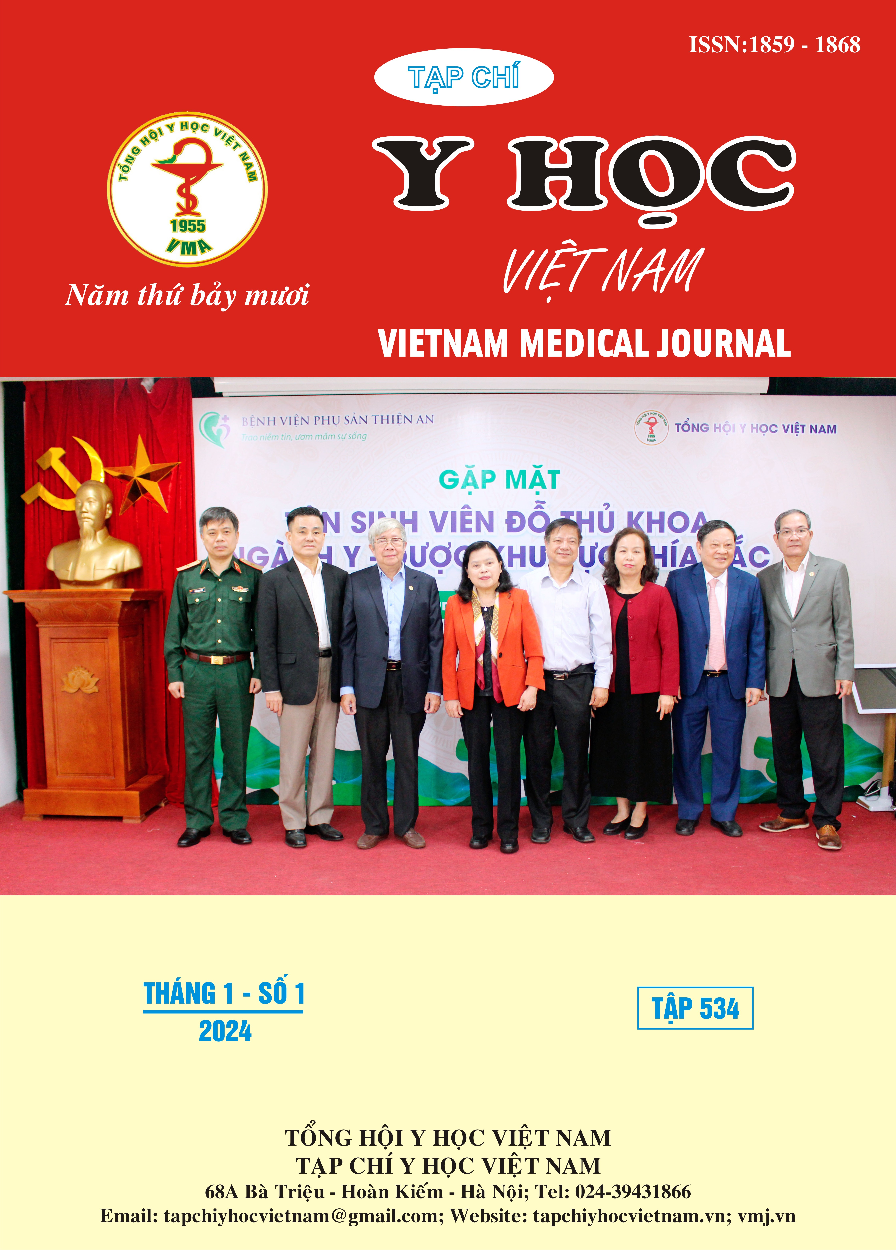THE CLINICAL AND PARACLINICAL CHARACTERISTICS OF MYASTHENIA GRAVIS PATIENTS UNDERWENT THYMECTOMY
Main Article Content
Abstract
Background: Myasthenia gravis (MG) is mainly caused by autoantibodies attacking acetylcholine receptors (AChRs), which are thought to originate from germinal centers of the thymus. Methods: We conducted a retrospective descriptive study on 60 MG patients aged ≥18 who underwent thymectomy and had tissue histopathology reports at the University of Medicine and Pharmacy Hospital in Ho Chi Minh City from January 2017 to January 2022. Results: In our sample, 32 patients had thymomatous MG (ThMG) and 28 patients had non -thymomatous MG. 41 patients had early-onset myasthenia gravis (EOMG) and 19 patients had late-onset myasthenia gravis (LOMG). 93.4% of patients were classified as MGFA class I, II at admission, while all patients were classified as MGFA class I, II after hospital discharge. The AChR-Ab concentration did not differ between the ThMG group and non-ThMG group. Among the ThMG group, the thymic tissue WHO pathology classifications were type AB (25%), A (3.1%), B1 and B2 (46.8%), B3 (6.3%). On the other hand, the non-ThMG group primarily consisted of thymic hyperplasia (35.7%) and thymic remnants (50%). The accuracy rate of thoracic MRI and CT Scan in identifying thymic lesions consistent with pathological results were 95.2% and 84.6%, respectively. The need for corticoide and pyridostigmin decreased at 12 months after thymectomy (p=0.049, p=0.003, respectively). The rates of patients who had symptoms remission after 6 and 12 months were higher than the rate at hospital discharge (p<0.001). No significant difference in the clinical outcome was found between ThMG and non-ThMG at 12 months after thymectomy (p=0.48). Conclusion: Post-thymectomy can reduce MG patients’ need for medications and the severity of MG after 12 months.
Article Details
References
2. Marx A, Yamada Y, Simon-Keller K, et al. Thymus and autoimmunity. Seminars in immunopathology. Feb 2021;43(1):45-64. doi: 10.1007/ s00281-021-00842-3
3. Narayanaswami P, Sanders DB, Wolfe G, et al. International Consensus Guidance for Management of Myasthenia Gravis: 2020 Update. Neurology. Jan 19 2021;96(3):114-122. doi:10.1212/wnl.0000000000011124
4. De Roxas RC, Bagnas MA, Baldonado JJ, Rivera JP, Roxas AA. Clinical Profile and Outcome of Postthymectomy versus Non-Thymectomy Myasthenia Gravis Patients in the Philippine General Hospital: A 6-Year Retrospective Study. Frontiers in neurology. 2016;7:96. doi: 10.3389/fneur.2016.00096
5. Fan L, Ma S, Yang Y, Yan Z, Li J, Li Z. Clinical differences of early and late-onset myasthenia gravis in 985 patients. Neurological research. Jan 2019;41(1): 45-51. doi:10.1080/ 01616412. 2018.1525121
6. Kim H, Lim YM, Lee EJ, Oh YJ, Kim KK. Factors predicting remission in thymectomized patients with acetylcholine receptor antibody-positive myasthenia gravis. Muscle & nerve. Dec 2018, doi:10.1002/mus.26300
7. Na KJ, Hyun K, Kang CH, et al. Predictors of post-thymectomy long-term neurological remission in thymomatous myasthenia gravis: an analysis from a multi-institutional database. European journal of cardio-thoracic surgery: official journal of the European Association for Cardio-thoracic Surgery. May 2020;57(5): 867-873. doi:10.1093/ejcts/ezz334
8. Tuan PA, Vien MV, Dong HV, Sibell D, Giang BV. The Value of CT and MRI for Determining Thymoma in Patients With Myasthenia Gravis. Cancer control: journal of the Moffitt Cancer Center. Jan-Dec 2019;26(1):1073274819865281. doi:10.1177/10732748198652.


